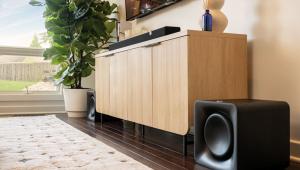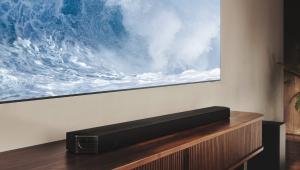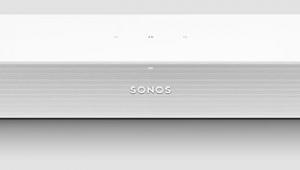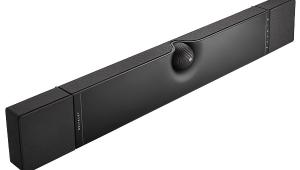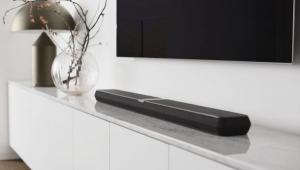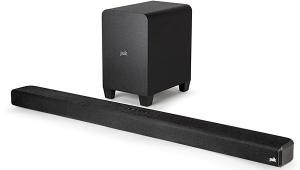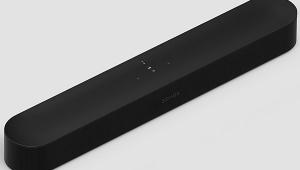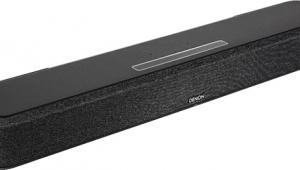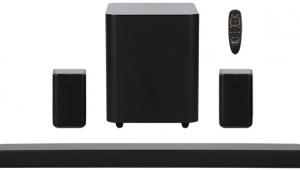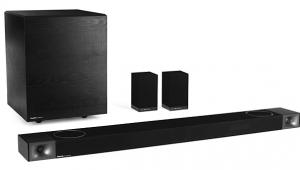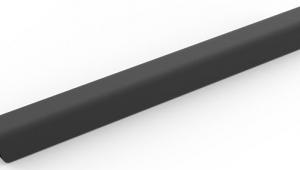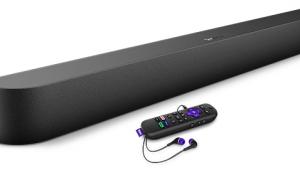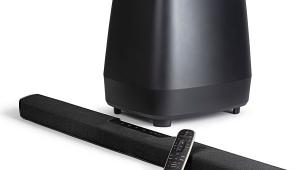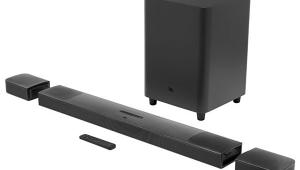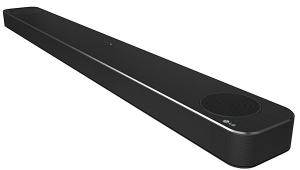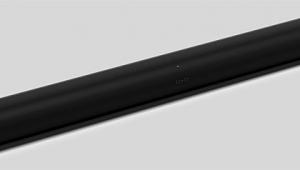I can totally relate to the experience shared here! I’ve been using https://www.cricketfresh.in/ for a while now, and it’s honestly been a game-changer for my cricket experience. The live scores are quick and accurate, making it super easy to follow matches no matter where I am. Also, the predictions and expert insights are spot on, especially for major events like the IPL. If you’re a cricket fan, this site is definitely a must-have!
Sony HT-ST5000 Soundbar System
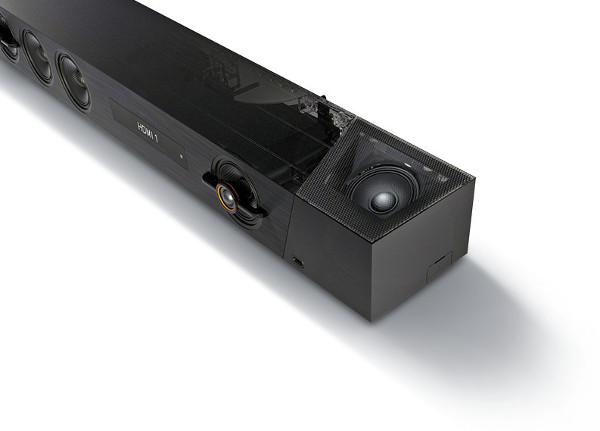
AT A GLANCE
Plus
Generally neutral sound reproduction
Dolby Atmos and DTS:X spatial enhancement
Ample level for serious listening to both music and movies
Minus
No physical surround-speaker option
Subwoofer-to-soundbar integration is tricky
THE VERDICT
Sony’s high-end soundbar-subwoofer twosome delivers natural, tightly imaged, Atmos/DTS:X-abetted sound along with striking, understated good looks.
Soundbars are marching relentlessly up-market, and Sony is right there with the Dolby Atmos- and DTS:X-capable HT-ST5000, which carries a list price of $1,500 and is being widely promoted this holiday season at $1,298 from the major retailers. It checks all the latest boxes: scarily slim, seriously wireless (including a wireless subwoofer), and no-rear-speakers faux surround sound.
Three coaxial driver arrays, each incorporating a 65mm cone woofer and a 14mm dome tweeter, serve up left-, center-, and right-channel signals, respectively. Four additional 65mm drivers are shared by those three channels for “surround” contributions (and, possibly, low-frequency support). And two up-firing, 65mm full-range cones do the ceiling-bounce Atmos and DTS:X elevation thing. Sony clarified that while the middle coax serves as the center channel, the remaining centrally-located drivers are used in conjunction with signal processing to help place the surround and back surround channel information from multichannel soundtracks. All speakers in the system are driven by individual amplifiers, so there are 12 of those plus the subwoofer amp, rated to deliver a total of 800 watts among all the drivers, according the spec sheet.
Meanwhile, the subwoofer houses a single 7-inch woofer and a 12 x 8-inch passive radiator, along with its own 200-watt amplifier (specified at an unusual 100 hertz with no further details) and wireless-ness. Everything is all snuggled up in a cabinet that’s little bigger than the larger sort of breadbox.
As for that DTS:X compatibility part — this was not always the case with the ST-5000. It was only after our evaluation was complete and the review sample was sent off to S&V's mysterious laboratory in California for measurement that Sony suddenly issued a firmware update announcing full compliance with DTS's latest height-enabled surround format (supported along with DTS-HD Master Audio and legacy DTS). My comments below on object-based surround sound were made strictly with Atmos-enabled soundtracks, but it's reasonable to assume you could expect a similar experience with regard to execution of the reflecting height channels.
Setup
The HT-ST5000 arrives in one of those monolithically L-shaped cartons, weighing well over 50 pounds — the kind of box that might have been purposely designed to induce a hernia. Unpacking it requires the care of an origami sensei and the flexibility of a 14-year-old Romanian acrobat; I managed. The bar itself is impeccably slim — roughly 5 inches deep and 3 inches tall with width for days (46.5 inches). Integrated footpads are placed for a shelf or furniture surface at least 30 inches wide, but I made my 16-inch-wide center-channel stand work with a couple of temporary felt pads. Positioned under the bottom edge of my 55-inch Vizio M series TV, which it very nearly matched in width, the Sony looked like it was made to go there. I see the appeal.
The subwoofer is a vertically oriented design, with the active driver firing forward and an oblong-shaped passive radiator firing downward into the roughly 1-inch airspace created by the unit’s integrated plinth. The wireless sub’s only controls are a power pushbutton and a small Secure Link button (pairing was automatic in my use).
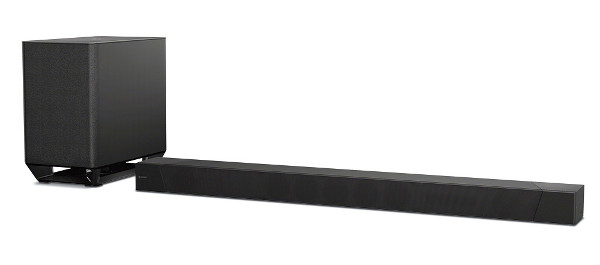
Along the top-rear edge of the soundbar is a row of small keys for power, volume, and navigation, though operating them while watching TV is more than a little awkward. Connection options are typical of current bars. The simplest, which would be a single HDMI cable from a TV’s ARC (Audio Return Channel)-capable input/output jack, will likely work for most owners; in this array, the TV becomes the AV control center, and all external sources (such as Blu-ray, gaming, and streaming boxes) connect to it. However, this scheme may not deliver Atmos-encoded Dolby, which still doesn't pass from ARC HDMI ports on some sets. So instead, I chose to connect my sources directly (two at a time, because I only have a pair of sufficiently long HDMI cables to reach my rack a dozen feet distant), with the soundbar’s sole HDMI out feeding the TV. An optical digital-audio input is provided for HDMI-less systems, while a stereo analog-audio input (3.5-mm minijack) can serve a non-wireless source like a legacy portable or CD player — or something even more antique, such as a VCR or an old telly. As might be expected in a late-generation high-end soundbar, the three HDMI ports are all version 2.0 and HDCP 2.2, allowing 4K and both HDR10 and Dolby Vision HDR passthrough.
Setting up the bar proved to be quite straightforward. Initial power-up walks you through the options, with useful graphical prompts displayed onscreen. There’s no auto-calibration routine, which is a bit surprising for a $1,500 system at a time when even most sub-$300 AV receivers include such. There is a Distance setting in the menu which effects somewhat the rendering of the rear soundfield. The setup page also provides ±6-decibel trims for “Front” and “Height” elements (in addition to subwoofer), but not for center in relation to L/R. A Voice Up feature is provided to “enhance dialogue range”, but that’s not the same as a response-neutral level adjustment.
Network setup is, of course, fundamental to so streaming-centric a component. The Sony found my wireless network and joined it without complaint, and it worked fine for all the streaming functions I subsequently tried. (An RJ-45 jack is present for wired-Ethernet use as well; I always use wired networking in my own system, but most people will rely on wireless.)
Listening, Viewing
From my listening chair, I discovered a couple of complicating factors related to the up-firing Atmos drivers. If you slide the bar right under the bottom edge of the TV, where it looks best, these drivers are largely occluded, defeating one of the Sony’s principal features. Placing the bar on the same shelf or furniture surface that the TV rests on but moving the bar a few inches forward does open up the Atmos drivers, but this may block the TV’s infrared receptor. Fortunately, the Sony integrates an easy-setup IR-repeater.
However, with the soundbar placed below the bottom edge of the TV, I found that I wanted to tilt the bar up some 15 degrees or so, to get the forward-facing drivers aimed squarely at the listener’s ear level, since doing so yielded a clearer, airier treble. But remember: The Atmos drivers are up-firing, and their forward tilt in the top of the bar is about the same 15 degrees. So tilting the bar up caused those drivers to point straight up or even slightly back toward the TV screen, which is surely not where Sony or Dolby intended them to reflect from.
In the end, I compromised, drawing my stand a half-foot or so out in front of my wall-mounted TV, and angling the bar up only very slightly. This proved sonically suitable, but it likely wouldn’t meet with much favor in a real-world installation, where looks count for more than they do in my studio (which is not at all). Along the same lines, the manual’s wall-mounting instructions advise offsetting the bar some 3 to 5 inches (depending on the depth of the set) from the bottom of the TV, to give the Atmos drivers clearance, which may not yield the integrated look you desire.
Finally, I could settle down to serious listening. First, I simply proceeded to watch some TV; after all, delivering TV sound is any soundbar’s first basic function. In its default listening mode, the HT-ST5000 produced a very solid image locked tight to the screen, with easily intelligible dialogue and substantial low-frequency support from the compact subwoofer. However, this raised another complication in the system’s setup. With the sub against the wall, just to the right of the bar’s (and the screen’s) right edge, there was simply too much upper midbass, resulting in a certain amount of thud. Bringing the sub 5 feet out into the room mitigated this a good deal and created a better integration. The sound was better still when I moved the sub almost directly into the right corner, which also reinforced the deeper bass octave noticeably. Yet this displaced midbass from the soundbar enough that subwoofer localization, even on a few voices, became problematic.
This is endemic to many soundbars (or indeed any systems of any type) that rely on tiny woofers trying unsuccessfully to play loud and simultaneously extend down to meet the subwoofer. Sony doesn’t specify the fixed sub crossover of the HT-ST5000, but my best guess was at least 200 Hz, requiring physical proximity of sub and soundbar to keep the 120-to-240-Hz octave connected to the action onscreen and balanced in level. [Editor's note: Right you are again, Dan — our after-the-eval measurement showed a rather wide gap between bar and sub and a bar roll-off that was well down off reference level by the crossover point around 250-300 Hz. See Test Bench.—RS] In the end, I compromised again, moving the sub a few feet toward the corner and a couple of feet out into the room. This worked reasonably well — but again, it’s unlikely to be welcome in an actual décor. Every room and setup will be different, requiring patient listening and experimentation to find the best compromise, but this one was trickier than others. It's likely you'll need an up-front sub placement, in any event.
- Log in or register to post comments

